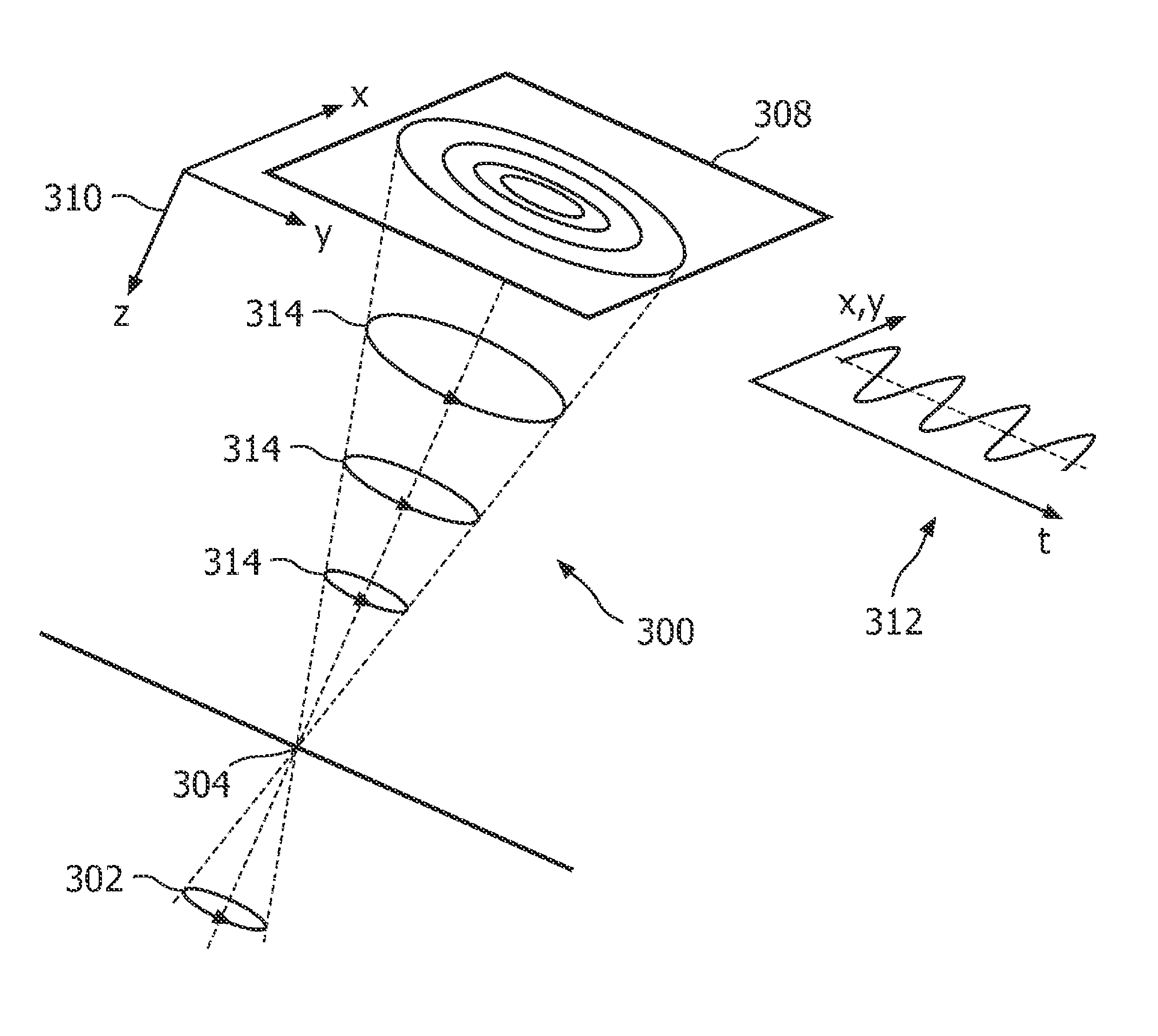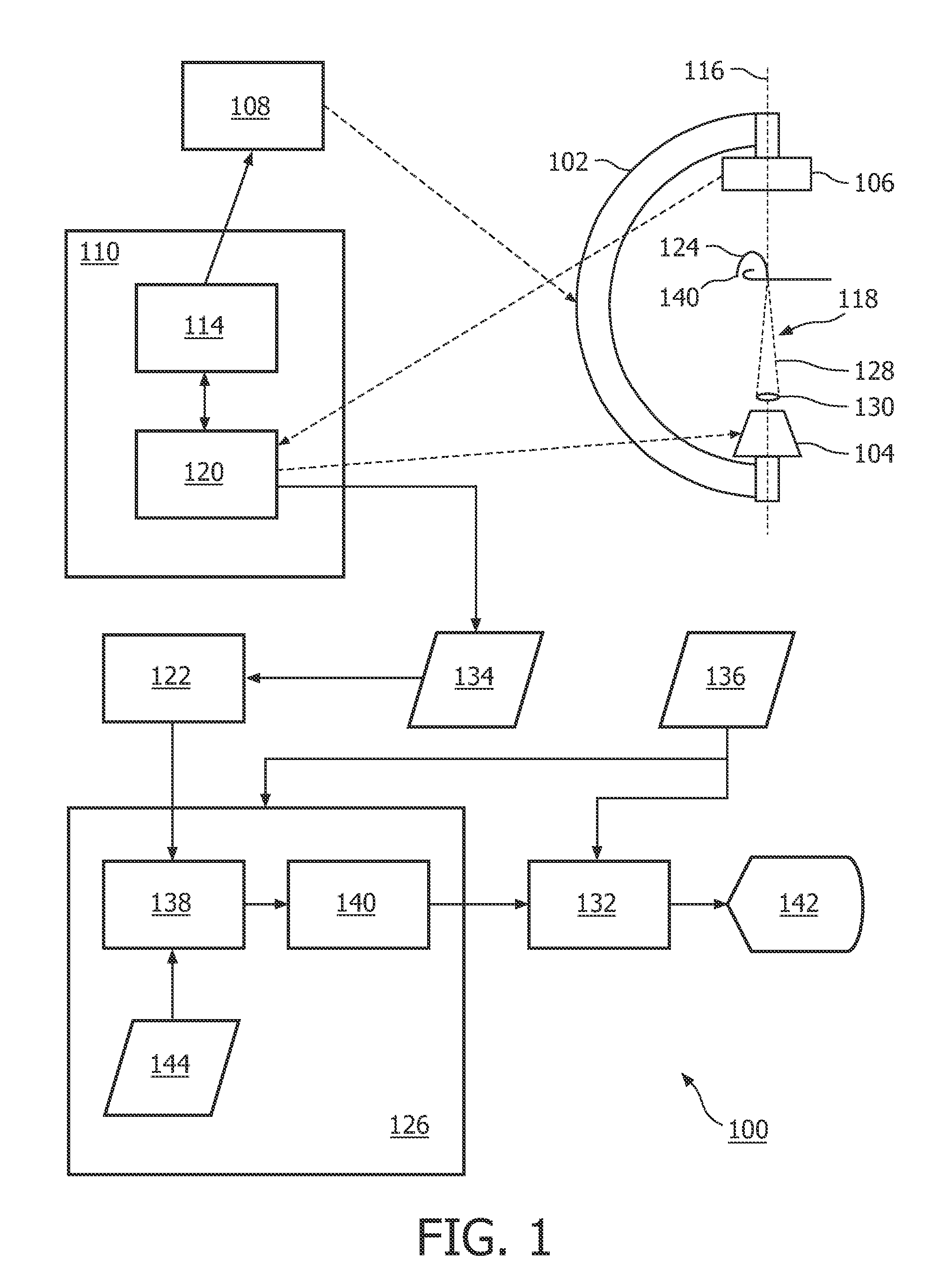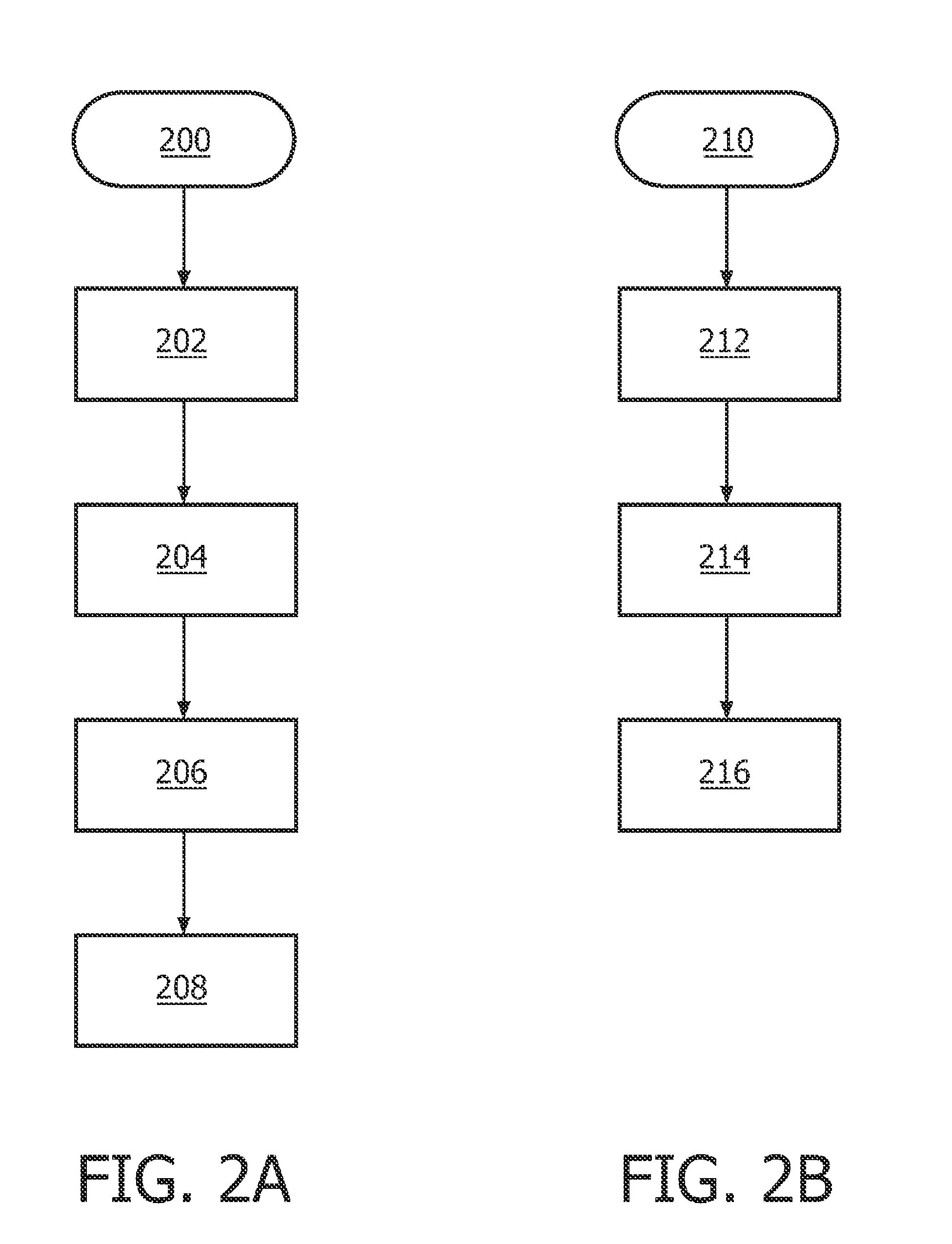Object localization in X-ray images
a technology of object localization and x-ray images, which is applied in the field of object localization in x-ray images, can solve the problems of inability to show the position of all catheters in relation to each other or the detailed endocardial anatomy, in real time, and the complexity of ablation procedures is very time-consuming, and achieves small angular range, improved depth estimation accuracy, and convenient use.
- Summary
- Abstract
- Description
- Claims
- Application Information
AI Technical Summary
Benefits of technology
Problems solved by technology
Method used
Image
Examples
Embodiment Construction
[0027]In this detailed description, several methods, systems, and computer program products are described that enable to estimate image depth information by use of conventional X-ray imaging. One of the applications discussed is three-dimensional (3D) position localization for electrophysiology (EP) procedures. However, the ideas and the embodiments described are applicable to a wide range of applications, in particular where automated object detection and tracking is feasible.
[0028]Such X-ray based 3D localization may be based on (ultra) low-dose fluoroscopy on monoplane geometry. Biplane and other geometries may also be used, although the information of only one detector is sufficient to provide depth information. The methods may be based in part on automated object tracking and / or signal processing, and on precession of the gantry on which the X-ray source and / or X-ray detector are mounted.
[0029]Fluoroscopy guided ablation focuses on guiding the physician through the position of ...
PUM
 Login to View More
Login to View More Abstract
Description
Claims
Application Information
 Login to View More
Login to View More - R&D
- Intellectual Property
- Life Sciences
- Materials
- Tech Scout
- Unparalleled Data Quality
- Higher Quality Content
- 60% Fewer Hallucinations
Browse by: Latest US Patents, China's latest patents, Technical Efficacy Thesaurus, Application Domain, Technology Topic, Popular Technical Reports.
© 2025 PatSnap. All rights reserved.Legal|Privacy policy|Modern Slavery Act Transparency Statement|Sitemap|About US| Contact US: help@patsnap.com



